Angela Slatter's Blog, page 25
October 24, 2018
Kirkus Review
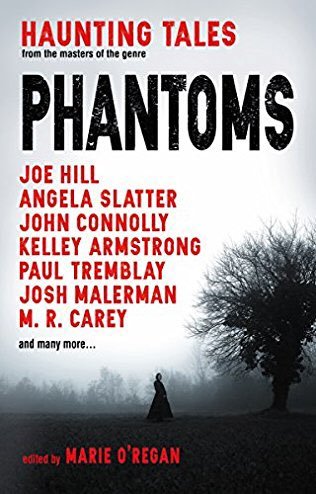 Momentous occasion: my first mention in Kirkus Review!
Momentous occasion: my first mention in Kirkus Review!
Especially delightful as this story appears in the wonderful Marie O’Regan’s new Titan anthology, Phantoms.
Phantoms edited by Marie O’Regan is an anthology of (mostly) new ghost stories from the likes of M.R. Carey, Gemma Files, Joe Hill, Allison Littlewood and more. The superb lead story, “When We Fall, We Forget” by Angela Slatter, is a beautifully haunting story about a woman, a priest, revenge, and justice. It’s hard to say more than that without ruining the allure of the story, the way the plot is teased out, pulling the reader along until, before you realize it, you have become emotionally invested in what happens.
And the rest of the fantastic list, Adventures in Short Fiction: 20 Tales of Terror, by John DeNardo is here.
October 10, 2018
Best New Horror #29
 I’m delighted to announce that Mr Stephen Jones is taking my story “No Good Deed” for Best New Horror #29 (PS Publications)! This story originally appeared in Mark Morris’ New Fears (Titan Books).
I’m delighted to announce that Mr Stephen Jones is taking my story “No Good Deed” for Best New Horror #29 (PS Publications)! This story originally appeared in Mark Morris’ New Fears (Titan Books).
Hark! is in the house
Few things are better in a writer’s life than the arrival of author copies! Thanks, Rob and Christopher!
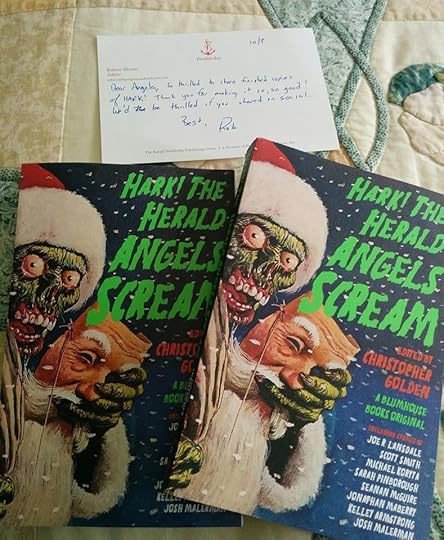
October 4, 2018
Hark!
Just a quick reminder that Hark! The Herald Angels Scream is out for Halloween!
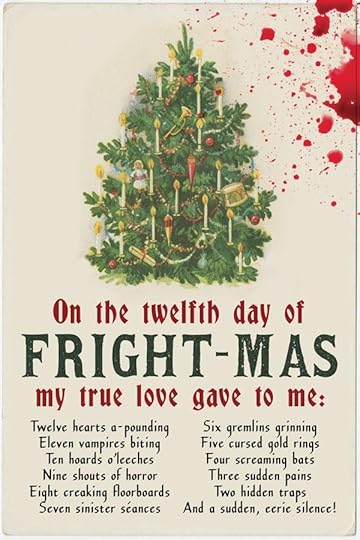
HARK! THE HERALD ANGELS SCREAM, due out in October from Knopf Doubelday. “Honor Thy Mother” is a tale of unappreciated mothers and disappointing sons at Christmas.
Eighteen stories of Christmas horror from bestselling, acclaimed authors including Scott Smith, Seanan McGuire, Josh Malerman, Michael Koryta, Sarah Pinborough, and many more.
That there is darkness at the heart of the Yuletide season should not surprise. Charles Dickens’ A Christmas Carol is filled with scenes that are unsettling. Marley untying the bandage that holds his jaws together. The hideous children–Want and Ignorance–beneath the robe of the Ghost of Christmas Yet to Come. The heavy ledgers Marley drags by his chains. In the finest versions of this story, the best parts are the terrifying parts.
Bestselling author and editor Christopher Golden shares his love for Christmas horror stories with this anthology of all-new short fiction from some of the most talented and original writers of horror today.
ToC:
Absinthe & Angels – Kelley Armstrong
Christmas in Barcelona – Scott Smith
Fresh as the New-Fallen Snow – Seanan McGuire
Love Me – Thomas E. Sniegoski
Not Just for Christmas – Sarah Lotz
Tenets – Josh Malerman
Good Deeds – Jeff Strand
It’s a Wonderful Knife – Christopher Golden
Mistletoe and Holly – James A. Moore
Snake’s Tail – Sarah Langan
The Second Floor of the Christmas Hotel – Joe R. Lansdale
Farrow Street – Elizabeth Hand
Doctor Velocity: A Story of the Fire Zone – Jonathan Maberry
Yankee Swap – John M. McIlveen
Honor Thy Mother – Angela Slatter
Home – Tim Lebbon
Hiking Through – Michael Koryta
The Hangman’s Bride – Sarah Pinborough
September 25, 2018
The Lovecraft Squad: Dreaming
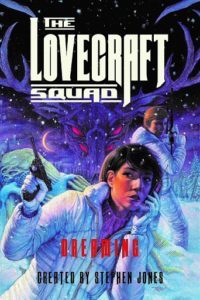 Fantastic review of The Lovecraft Squad: Dreaming (Stephen Jones, ed.) by the Sci-Fi and Fantasy Reviewer.
Fantastic review of The Lovecraft Squad: Dreaming (Stephen Jones, ed.) by the Sci-Fi and Fantasy Reviewer.
The Lovecraft Squad: Dreaming is a hugely enjoyable anthology, and Stephen Jones has once again worked his magic as editor to pull together some of the best and most imaginative writers in the horror and cosmic horror genres to deliver original, engaging and chilling tales based around the Human Protection League shared universe. Although some of the stories work better than others, they all fully engage with the material on offer, and deliver some surprising angles, most notably Kim Newman’s epic novella. The anthology works because the writers poke their heads behind the curtains of intra-government infighting and political conspiracies, which occurred in real-life, and then integrate those fascinating subjects with the heady, cosmic horrors of the Lovecraftian universe; the conflict between an agency trying to fend off eldritch horrors while simultaneously trying to justify its existence is begging for more meat to be put on the bone, and I’d love to see more in this direction in the future of the series.
The rest is here.
Useful Articles
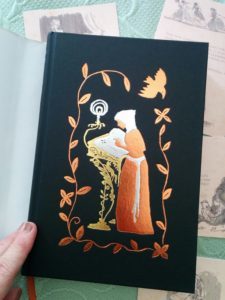 Here are a couple of articles I wrote a little while ago, still useful information.
Here are a couple of articles I wrote a little while ago, still useful information.
Over at The Writing Platform – Online Presence: Pros, Perils and Possibilities.
Over at Cultured Vultures – Top 5 Networking Tips for Writers.
September 18, 2018
The Karnstein Trilogy: Carmilla’s Children
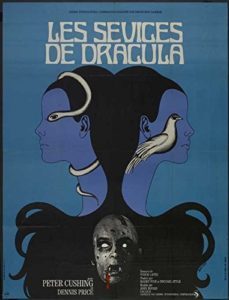
Movie poster for the French release of Twins of Evil
So, after a couple of year, much work and re-work, throwing self on the fainting couch, I have finally figured out the configuration for my take on the Carmilla films from Hammer. Huge thanks to editor Neil Snowdon for his patience with the creative response and for helping me get it beaten into shape.
So, The Karnstein Trilogy: Carmilla’s Children will consist of a 30,000 word novella (“Darker Angels”) and an essay (i.e. scads of barely-founded opinions) about the three films making up the trilogy, The Vampire Lovers, Lust for a Vampire, and Twins of Evil. It will be out some time in 2019.
New Novel: Blackwater

Art cards by Kathleen Jennings
So, I’m in a weird place at the moment, having delivered one series I’m not sure what (if anything) will be published next as far as novels are concerned. But I am working on finalising the first draft of this, Blackwater, something new for me, a gothic-y novel, set in Ireland and Australia. Here’s the opening chapter for those who are interested.
Part I: In All Beginnings, Are Endings
Chapter One
See this house perched not so far from the granite cliffs? Not so far from the promontory where the Howth lighthouse sits? It’s very fine, the house. It’s been here longer than the beacon, by a good few hundred years, and it’s less a house than a sort of castle now. Although perhaps “fortified mansion” describes it best. There are four towers, one at each corner, added in the mid-seventeen hundreds, and in between them an agglomeration of buildings of various vintages: the oldest, squarest, is a stone structure that was probably there first, a twelfth century thing, when the family first made enough money to better their circumstances. Two storeys and an attic, grey stone leeched by age; ivy grows over all it, except the windows, a strangely bright green almost like a sea algae, on the grey walls, winter and summer. Fourteenth century wings connect it to the towers; the age of the stables is anyone’s guess, but they’re a tumble-down affair, their state a nod to the family fortunes perhaps. There is stone that’s sometimes grey, sometimes gold, sometimes white, depending on the time of year, time of day and how much sun is about, and embedded in the walls are swathes of glass both clear and coloured from when the O’Malleys could afford the best of everything; the glass lets the light in, but cannot keep the cold out, so the hearth are enormous, big enough for a man to stand upright or an ox to roast in.
They built close to the cliffs – but not too close, they were wise the first O’Malleys – so there’s a broad lawn of green, a low wall almost at the edge to keep all but the most determined, the most stupid, from toppling over, and there’s a path that winds back and forth on itself, an easy trail down to a pebbled shingle that stretches in a crescent. At the furtherest end is a sea cave, or was before the collapse, a tidal thing you don’t want to be caught in at the wrong time. A place the unwary have gone looking for treasure for rumours abounded that the O’Malleys smuggled, committed piracy, hid their ill-gotten gains down there until they could be safely shifted elsewhere and exchanged for gold and silver to line the family’s already overflowing coffers.
The truth is, no one knows where they came from but no one can remember a time when they weren’t here, or at least spoken of. No one says ‘Before the O’Malleys’ for good reason; their history is murky, and that’s not a little to do with their very own efforts. Local recounting claims they appeared in the 1100s, perhaps in the vanguard of Strongbow’s army, or perhaps trailing along behind gathering what they could while no one noticed, until they had enough to make a reputation. What’s spoken of is that they were tall even in a place where the Norse raiders had liberally scattered their seed, but not blond: dark haired, dark eyed, with skin so terribly pale that in another country folk might mutter that they didn’t go about by day, but that wouldn’t have been true.
They took the land by Howth Head and built the first house; they prospered quickly. They built ships and traded, and built more ships and traded more, roamed further. They grew rich from the sea and everyone knew tell of how the O’Malleys did not lose themselves to the water, they their ships did not sink and their sons did not drown (or only those meant to) for they swam like seals, learned to do so from their first breath, first step, first stroke. They kept to themselves, seldom taking wives or husbands who weren’t of their extended families – they bred like rabbits, but the core of the family remained tightly wound around a limited bloodline. And they paid no more than a passing care for the opinion of the Holy Mother Church, which was more than enough to set them apart, make them an object of unease and rumour.
But they kept their position. They were neither stupid nor fearful. They cultivated friends in the highest of high places, sowed favours and reaped the rewards of doing so, and they gathered secrets and lies, oh! such a harvest. The O’Malleys knew the locations of all the inconvenient bodies that had been buried due to exigence; sometimes they put the bodies there themselves. They paid their own debts, made sure they collected what was theirs, and ensured all who dealt with them knew that what was owed, would be paid back one way or another.
They were careful and clever.
Even the princes of the church found themselves, at one point and other, beholding to them. Some churchman of import required a favour only the O’Malleys could provide and so, hat in hand, he came to them. Under cover of darkness, of course, in a closed carriage with no regalia that might give him away, on the loneliest roads out of Dublin to the big old house on Howth Head; he’d take a deep breath as he stepped from the conveyance, then another as he looked up at the great panes of glass lit from within so it looked like the interior was on fire, and he’d cross himself for fear that he might find himself somewhere more infernal when he crossed the threshold.
More than one made such visits over many years. Yet such men mislike owing favours to anyone – especially women – and there was a time when females held the O’Malley family reins; those very same priests tried to avoid paying one debt or another. All manner of excuses offered and an equal number of threats and coercions too. None of them worked, and the ecclesiastics found themselves brought to heel: a bishop was unseated and moved on like some common mendicant, and the smile on the lips of the matriarch wide and red.
And it’s a loss that’s never been forgotten, not in several hundred years, and it’s unlikely to ever be. Indeed, the Church’s memory is long and unsleeping, and in each successive generation one of her sons has sought a way to make the family pay. No matter that the O’Malleys had given a child to the church for as long as anyone can recall, that they paid more than their tithes required, and they supported endowed livings for more than one cleric, gave charitably to many causes, and had a pew with their name on it in St Patrick’s all to themselves, where they sat every Sunday whenever in attendance at the townhouse they maintained in Dublin.
An insult once given to the Holy Mother Church is never forgotten, though the family had grown too influential to be easily destroyed, and generations of godly men have devoted a good deal of their lives to ill-wishing the O’Malleys past, present, and future. Much effort and energy were devoted to the cursing of the name, gossiping about the source of their prosperity, and plotting to take it from them. Many was the head shaken in rue that pyres and pokers were no longer options available as a means of enforcing conformity.
But it wasn’t only the more godly members of Dublin society at odds with the O’Malleys. Though they were generous, those who took O’Malley charity often found that the price attached to the aid rendered was much higher than they could have imagined. Some paid it willingly and were rewarded for the family valued loyalty; those who complained were justly requited. As time went on business partners thought twice about joining O’Malley ventures, and the more cynical amongst them counted their fingers twice after shaking hands on a deal, just to make sure all their digits were intact. Those who married in to the extended branches did so at their peril, for many were the husbands and wives deemed to be untrustworthy or simply inconvenient when passion had run its course, and disposed of quietly. And their dealings were always quiet, but things done ill always leave echoes and stains behind. Because they’d been around for so very long, the O’Malleys’ sins built up, year upon year, decade upon decade, century upon century.
There was something not quite right with the O’Malleys, they didn’t fear like others of their ilk; they, perhaps, put their faith elsewhere. Some said the O’Malleys had too much salt water in their veins to be good Catholics, or anything else good for that matter. But nothing could be proven, not ever, not in almost eight hundred years.
As it turned out, they brought themselves down without aid from the Church.
They’d not been bothered, or not overly so for the decline had seemed gradual, at least at first. Their ships began to sink or be taken by pirates; then investments, seemingly shrewd, were soon proven unwise. It was, although no one but they knew, their bloodline that had faltered first, and their fortunes followed soon after.
Almost all their affluence bled away, faster and faster, until within a generation there was just the house on the promontory (the Dublin townhouse having been sold to a lesser branch of the family); the great fleet was whittled was to a couple of merchant vessels making desultory journeys across the seas; and the deeds to some property in the Americas, the value of which no one was quite certain. The O’Malleys had too many debts, too little capital, blood running thin …
The grounds of the grand mansion were once carefully tended by an army of gardeners, but now there’s only a single man – Malachi who is ancient, barely breathing, farting dust – to take care of things. All the walled gardens are over-run – all but one, the one the old woman uses – their doors bound shut with brambles. The paths through are maintained but only just, and those who walk them risk having sleeves and skirts torn by thorns and branches, twigs with too much length and strength. Malachi’s sister, Maura – younger and less given to farting – does what she can to keep the interior of the house shining, but she’s one woman, arthritic and tired and cross; it’s a losing battle.
And now there’s just a single daughter left of the household, whose surname wasn’t even O’Malley because her mother had committed the triple sins of being the only surviving child of four, a girl, and insisting from sheer perversity on taking her husband’s name, despite her own mother’s insistence that it really should be the other way around. Worse still: he had no O’Malley lineage, this Liam Elliott, so the daughter’s blood was thinned once again.
And in this, the Year of Our Lord 1896, the family found itself much diminished in more ways than one. Unable to pay its creditors and investors, unable to give to the sea what it was owed, and with too few of other people’s secrets to use as currency, the O’Malleys were, at last, in danger of extinction.
***
September 3, 2018
New Collection!
 Delighted to say that I’ve signed a contract with the wondrous PS Publishing for a new collection of stories, due out in 2019.
Delighted to say that I’ve signed a contract with the wondrous PS Publishing for a new collection of stories, due out in 2019. 
Twelve reprints, two new stories, and an intro by Mr Kim Newman, for which I am eternally grateful.
Ze official blurb:
THE BEST SHORT STORIES OF ANGELA SLATTER
Welcome to The Best Short Stories of Angela Slatter .
Slatter’s work has been described by the legendary Ramsey Campbell as “enviably original, and told in prose as stylish as it’s precise. Not just disturbing but often touching, her work enriches and revives the tale of terror.”
From the fierce changeling children of ‘Finnegan’s Field’ to shades of old gods in ‘Egyptian Revival’, from the Lovecraftian echoes of ‘Lavinia’s Wood’ to a new kind of Victorian sleuth in ‘Ripper’, and from the re-imagined fairy tale of ‘The Little Mermaid, in Passing’ to the tender terror of ‘Neither Time nor Tears’, the stories in this collection spring from dragons’ teeth scattered on the field of story.
The Best Short Stories of Angela Slatter collects twelve reprints and two new unpublished tales, with an Introduction by Kim Newman.
“Slatter’s dark fantasies have a bright, burning core of understanding and insight.” ~ M.R. Carey, author of The Girl with All the Gifts and The Boy on the Bridge.
“Angela Slatter’s stories are horrific, mysterious, whimsical, and mischievous. Beautifully written, full of humanity and intelligence, her stories are both timely and timeless in their concerns. This is an essential collection from one of our best.” ~ Paul Tremblay, author of A Head Full of Ghosts and The Cabin at the End of the World.
“Angela Slatter ’s prose is both eloquent and elegant ? which is no mean feat. By turns beautiful and chilling in equal measure, her stories feature characters who live and breathe and leap off the page, while the plots themselves are wholly unique. This book is a gem and you should treasure it as such.” ~ Paul Kane, bestselling and award-winning author of Sherlock Holmes and the Servants of Hell, Monsters and Before.
“Angela has a rare talent for drawing the reader in to her world, with a lyrical, almost fairytale quality to her writing that also shows a sardonic wit to delight the reader. This collection showcases some of her best stories – you need to read it.” ~ Marie O’Regan, author of Bury Them Deep, editor of Phantoms and The Mammoth Book of Ghost Stories by Women.
September 2, 2018
Suspended in Dusk II: Paul Michael Anderson
 Today’s blog guest is Paul Michael Anderson, talking about “Wants and Needs”.
Today’s blog guest is Paul Michael Anderson, talking about “Wants and Needs”.
1. What was the inspiration for your SiD2 story?
Honestly? A house I’d looked at with my wife when we were looking to buy about four years ago. It was this loft-style house that was really awesome but totally impractical because the road up the mountain was rough on the Pontiac Sunfire I was driving at the time. We ultimately passed, but the idea of being isolated up there stuck around in my head. Add into that grief (which I’d written about, from different perspectives, in stories like “All That You Leave Behind” and “Last Days of a Ready-Made Victim”) and the concept of wendigos and there you are.
2. Who are your top five horror-writing inspirations?
Huh. Jack Ketchum, Damien Angelica Walters, Harlan Ellison, James Herbert, Shirley Jackson. This wasn’t easy.
3. You get to choose one book for a desert island exile: what is it?
THE TALISMAN, by Stephen King & Peter Straub. That was easier.
4. What’s your favorite trope in horror?
Guilt. I like seeing how writers play with it. Guilt fucks up your perspective and the way you perceive the actions and motivations of others, regardless of how much or how little self-absorbed you are. The works I tend to dig the most has a place for guilt within its protagonists and antagonists.
5. What’s next for you? 
I have two novellas coming out this year–“How We Broke” (co-written with Bracken MacLeod) in CHIRAL M4D, and “I Can Give You Life” in ASHES & ENTROPY–plus assorted short stories in a number of places. Hustling the 2nd edition of my first book BONES ARE MADE TO BE BROKEN, which will be out some time in July, and working on the follow-up to that collection with something (not sure what yet)
Bio:
Paul Michael Anderson is a writer and teacher living in northern Virginia with his wife and daughter. He is the author of BONES ARE MADE TO BE BROKEN and assorted stories, interviews, and reviews. He is working on his first novel.



